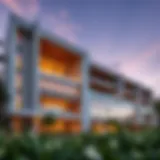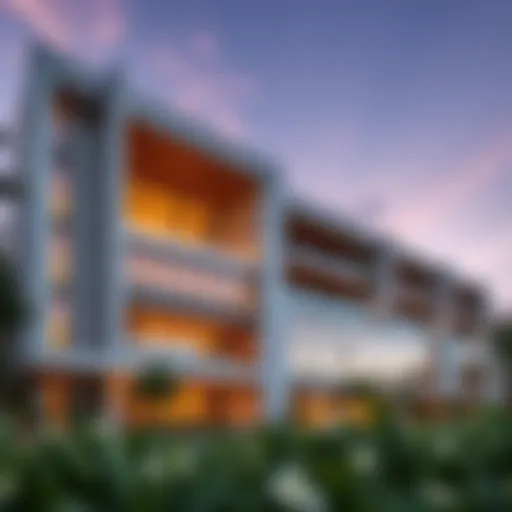Discover the Cultural Richness of Naif Souk, Dubai
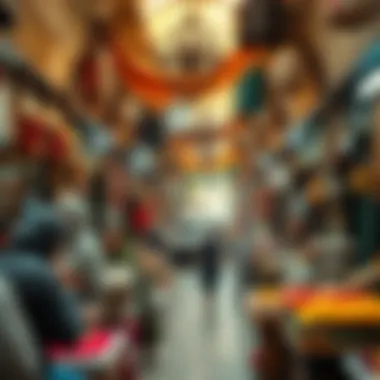
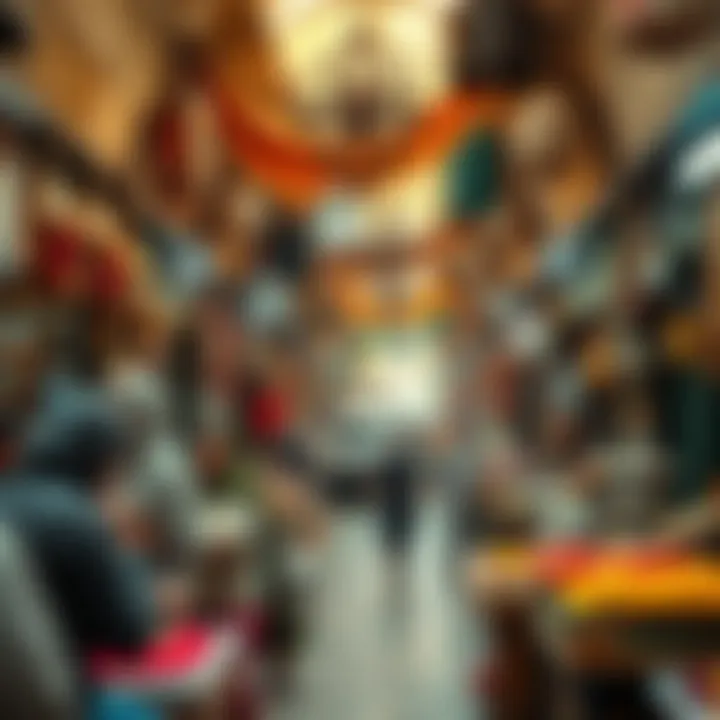
Intro
Nestled in the heart of old Dubai, the Naif Souk is more than just a shopping destination. This vibrant market presents a tapestry of cultural heritage and commerce. For anyone looking to immerse themselves in the authentic spirit of Dubai, exploring Naif Souk is a must. The historical significance of this souk dates back to its origins, reflecting the evolution of not only its goods but also the dynamics of the marketplace.
Wandering through its narrow alleys, visitors can discover a variety of products ranging from traditional textiles to intricate handicrafts. It’s like stepping back in time while still enjoying modern conveniences. The contrast between the old-world charm and Dubai’s rapid modernization offers insights into how this souk has adapted while retaining its cultural essence.
This article aims to unpack the layers of Naif Souk — its rich history, the diverse offerings that attract both locals and tourists, and the impact of contemporary market trends. As Dubai continues to grow, so does the importance of traditional marketplaces like Naif Souk, providing unique opportunities for investors and experience seekers alike.
Prelims to Naif Souk
The Naif Souk, situated in the heart of Dubai, stands as more than just a bustling marketplace; it is a significant nexus of culture, history, and commerce that weaves together the past and present of this vibrant city. By stepping into Naif Souk, visitors find themselves amidst a rich tapestry of experiences, where the echoes of traditional trading practices harmonize with the pulse of contemporary commerce.
Located near the Dubai Creek, Naif Souk has garnered a reputation that draws both tourists and local residents, highlighting its importance in the broader context of Dubai's commercial landscape. The souk is a doorway into the heritage of the Emirati people, offering a glimpse into their customs, crafts, and the fabrics of everyday life that have been threaded through centuries.
The significance of exploring Naif Souk lies in its multifaceted nature. This market has remained a central player in Dubai's economic framework, often serving as a source of income for local artisans and business owners while also being a popular destination for shoppers seeking unique and authentic goods. Investors, homebuyers, agents, expatriates, and analysts alike should not overlook this locale, as it presents not only business opportunities but also an understanding of the cultural underpinnings that drive Dubai’s development.
Consider visiting the Naif Souk as an investment in culture and tradition. It provides a contrast to high-end malls and skyscrapers, helping to balance the modernity Dubai is known for with the rich history that shaped the emirate. Here’s what you might find interesting about this unique marketplace:
- Traditional crafts that showcase the skills passed down through generations.
- Contemporary shops that cater to the tastes of a global audience.
- An array of textiles that tell stories of their own, distinct to the region.
"Naif Souk is not just about shopping; it’s about experiencing the heartbeat of Dubai's history and culture."
In summary, the Naif Souk represents a confluence of tradition and innovation, making it an essential focus for those looking to understand the nuances of Dubai’s evolution. It invites everyone to explore its alleyways, engage with local vendors, and become part of a story that binds the old with the new.
Navigating the Market
Delving into the heart of Naif Souk reveals a rich tapestry of culture and commerce, making it essential to understand how to effectively navigate this vibrant marketplace. The souk is not just a shopping destination—it’s a reflection of Dubai’s rich history and cultural diversity. For tourists and investors aiming to glean insights about local commerce, knowing the key components of the market enhances the experience.
When you step into Naif Souk, it’s like stepping into a time capsule. Winding pathways lead to a plethora of goods that not only cater to the senses but also tell stories of generations past. Familiarizing oneself with the types of goods available allows visitors to appreciate the depth of the market while also providing opportunities for investment and engagement with local artisans.
Types of Goods Available
Navigating Naif Souk’s offerings requires an understanding of the unique goods available, which range from traditional handicrafts to exquisite textiles and elegant jewelry. Each category serves not just to fulfill the need for commerce but also to foster cultural expression.
Traditional Handicrafts
Traditional handicrafts sit at the core of Naif Souk's appeal. They embody the artistry and dedication of local artisans, passed down through generations. From intricately designed pottery to handwoven baskets, these items are more than just souvenirs; they're pieces of cultural heritage.
Key Characteristics: Each handicraft often reflects a unique style or technique that has historical significance, making it a beneficial choice for collectors and travelers alike. The sense of authenticity in these products often resonates deeply with those looking to bring home a piece of Dubai.
Unique Features: One significant aspect of these handicrafts is their personalization. Many artisans offer custom designs, giving buyers a sense of ownership over their purchase. However, the main disadvantage may be that these handcrafted items typically come at higher prices, reflecting the labor and time invested in their creation.
Textiles and Fabrics
Textiles and fabrics available in Naif Souk provide a glimpse into the rich tapestry of local fashion. From vibrant saris that dance with color to luxurious silks, each piece tells its own story. These materials are often sourced from the region and offer unique patterns and textures that can rarely be found elsewhere.
Key Characteristics: The quality and variety of fabrics make them a popular choice for both tourists and locals looking to make bespoke clothing or home decor. The experience of touching and selecting textiles adds to the delight of shopping.
Unique Features: Many textiles in this souk are available at different price points, catering to varying budgets. However, it’s important to note that high demand can sometimes lead to limited availability of certain items, especially during peak tourist seasons.
Jewelry and Accessories
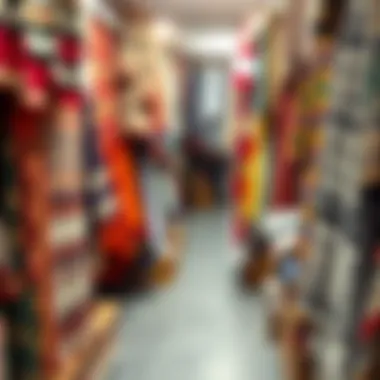
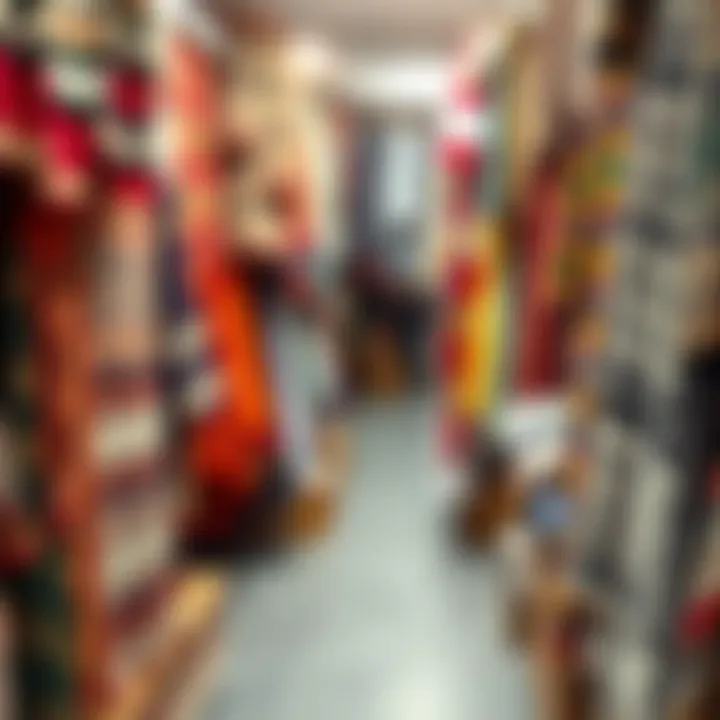
When it comes to jewelry and accessories, Naif Souk doesn’t disappoint. Stunning gold pieces and intricately designed silver items are a magnet for those who appreciate fine craftsmanship. Local jewelers often specialize in unique designs that incorporate traditional motifs, allowing shoppers to experience Dubai's aesthetic sensibilities.
Key Characteristics: The blend of modern and traditional designs makes these jewels a compelling choice for buyers who want something distinctive. Moreover, bargaining is often an accepted practice, which can lead to better deals for those willing to engage.
Unique Features: With the opportunity to have custom pieces made, shoppers gain an added layer of personal touch to their jewelry. The downside, however, is that the quality can vary widely, so potential buyers must do their homework or seek recommendations.
Local Artisans and Shops
The relationship between local artisans and markets like Naif Souk cannot be overstated. As the lifeblood of the souk, artisans not only create the goods but also uphold the tradition and cultural narratives that define the marketplace. Their stories and creative processes add depth to the shopping experience, transforming it from a mere transaction to an exchange of culture and heritage.
Many shops are not just sales points; they embody the essence of Dubai's craftsmanship, providing personal connections that enrich both the buyer's and seller's experience. Each conversation with an artisan can reveal layers of history, techniques, and passion that make visiting Naif Souk more than just about shopping—it’s about being part of a larger narrative.
Visitor Experience
The visitor experience at Naif Souk is integral to understanding the vibrancy and allure of this market. From the moment you step through the bustling entrance, the sensory overload envelops you—spices wafting through the air, vibrant textiles draped over stalls, and the lively banter of merchants negotiating prices. The atmosphere is electric, mixing the old-world charm of traditional markets with hints of modern hospitality, making it an essential stop for both tourists and locals.
Shopping Insights
When shopping at Naif Souk, you're not just purchasing items; you're engaging in a time-honored practice that many have cherished for generations. Stalls brim with wares, offering everything from hand-beaded jewelry and vintage textiles to the much sought-after traditional Arabic perfumes. A visit isn't merely transactional; it's an experience steeped in cultural significance that invites interaction with local artisans and a chance to learn their stories.
To navigate the labyrinthine aisles, one must be prepared for a bit of hustle. Prices often start high, so bargaining is not only expected but encouraged. This ritual can be quite exhilarating for shoppers, giving them a sense of accomplishment as they haggle for a better deal. Here, the art of negotiation isn’t just about dollars and dirhams; it’s about forging connections and immersing oneself in the local culture.
Culinary Offerings
The culinary offerings at Naif Souk are perhaps just as important as the shopping experience, providing visitors a taste of the region’s rich gastronomy. This isn’t simply about filling your belly; it’s about embracing the flavors that define Emirati culture.
Local Cuisine
Local cuisine at Naif Souk introduces visitors to traditional dishes that have been passed down through generations. The key characteristic of these meals is their authenticity, bringing flavors of the land directly to the table. Iconic dishes such as Shawarma, Kebabs, and Falafel are not just popular choices; they are celebrated symbols of the Arabian culinary landscape.
What sets these dishes apart is the meticulous methods used in their preparation and the rich spices that infuse them with flavor. Eating local cuisine becomes an exploration of history, as each plate tells a story—each spice tells its own tale.
Street Food Delights
Street food delights at Naif Souk highlight the informal yet flavorful side of dining in Dubai. From freshly made samosas to sweet baklava, these quick bites present a key opportunity for visitors to savor local flavor without a hefty price tag. What’s particularly alluring about street food is its accessibility; it allows people from all walks of life to share in the culinary experience.
Each stand has its own unique offerings, often reflecting regional variations that make the experience diverse and exciting. Plus, the atmosphere is lively, making it a great place to meet fellow travelers and locals. Trying street food is not just an act of eating; it’s a plunge into the vibrant daily life of Dubai, where flavors and aromas come alive in the bustling surroundings.
"Food is a universal language that connects cultures. At Naif Souk, each dish shared can spark conversations that bridge gaps between visitors and locals."
Visitors at Naif Souk enjoy a multi-layered experience that encompasses shopping, cultural immersion, and culinary exploration. This combination enriches their understanding of Dubai's heritage, making the souk a destination of choice for anyone eager to delve into the heart of Emirati culture. Whether engaging with local artisans or indulging in authentic dishes, the experience speaks volumes about the rich tapestry of life in Dubai.
Impact of Modernization
Modernization has left a significant mark on the Naif Souk and other markets across Dubai. This influence is not merely surface-level; it impacts the very essence of what a traditional marketplace represents. The Naif Souk stands at a crossroads, caught between its rich cultural history and an ever-evolving economic landscape. Understanding this dichotomy is crucial for anyone looking to engage with this local treasure, be it for investment, exploration, or both.
Balancing Tradition and Modernity
The challenge of maintaining the soul of Naif Souk while embracing modernization is akin to walking a tightrope. On one hand, advancements in technology and customer service standards heighten expectations and deliver improved shopping experiences.
For instance, vendors may now leverage social media platforms such as Facebook (https://www.facebook.com/) to reach a wider audience. Utilizing targeted ads can attract more tourists and investors to the souk. There's a modern twist on traditional marketing, ensuring that the flavors of local crafts and goods are not lost in the shuffle of progress.
However, modernization brings risks, too. While some older shops are closing in favor of more contemporary establishments, the heart of Naif Souk still beats with the pulse of its historical significance. Tourists and visitors come looking for authentic experiences. That means it’s imperative to preserve the atmosphere of the markets that has drawn people for generations.
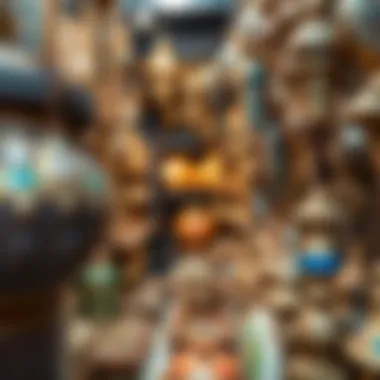
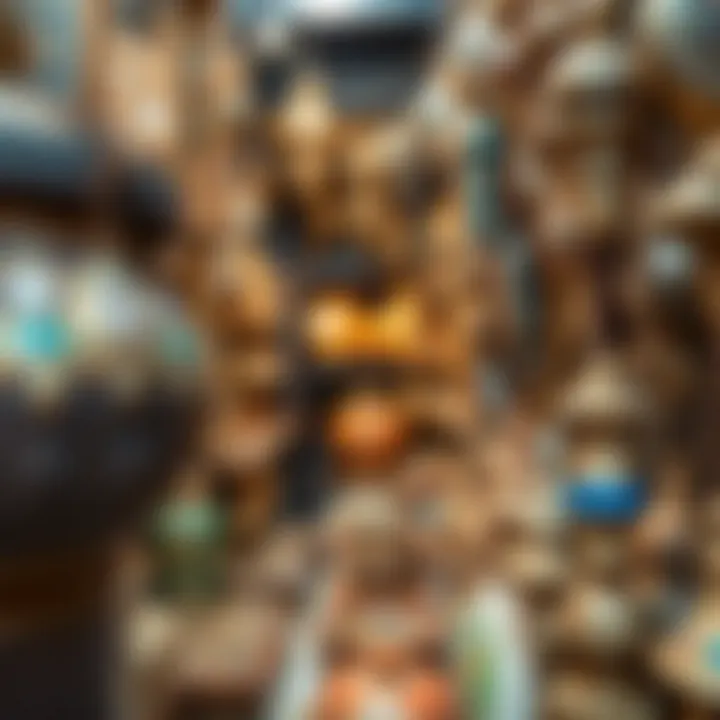
Balancing these contrasting forces creates a unique shopping environment—one where a sense of heritage blends with modern amenities—a paradox that defines Naif Souk today.
Influence on Local Businesses
With development on the rise, local businesses experience both opportunities and pressures. On the one side, modernization enhances accessibility. Public transport improvements and better infrastructure make it easier for both locals and tourists to visit this traditional market, potentially increasing foot traffic. Nevertheless, there's a side effect to consider.
Many small vendors find themselves in a battle against larger retail chains. The convenience of shopping malls and online platforms change the rules of engagement. Local businesses must adapt swiftly, focusing on unique selling propositions like personalized service and authentic cultural connections that large retailers can’t replicate.
In response, some merchants have taken the step towards innovation.
- Many have started offering online shopping options.
- Others have specialized in niche products that highlight local craftsmanship, thus reinforcing community ties.
Ultimately, the adaptability of local entrepreneurs is key to preserving the character of Naif Souk amidst the sprawling metropolitan changes surrounding it. Making strides in technology while respecting the traditional roots can create a sustainable future for these small businesses.
"The journey of Naif Souk beautifully illustrates how negotiating tradition and modernity isn't just vital; it's an art form that demands finesse and flexibility."
Understanding the nuances of this interplay can offer insight into investor strategies and homebuyers' interests alike as they contemplate the greater economic implications for the area.
Real Estate Insights in Naif Area
The Naif area, with its bustling souks and rich cultural tapestry, is more than just a shopping destination; it's a microcosm of Dubai's dynamic real estate landscape. Understanding the real estate insights in Naif is crucial not just for visitors but also for potential investors and those considering making this lively neighborhood their home.
The real estate market in Naif reflects a blend of traditional values and modern expectations. It offers properties that range from affordable leases to luxurious apartments, making it appealing to a wide array of buyers. One can find charming old-style buildings alongside newer constructions, which bridge the gap between histories of the past and aspirations for the future. This interplay creates a unique charm that entices both homebuyers and investors.
Property Trends
When it comes to property trends in the Naif area, several patterns emerge that distinguish it from other locales in Dubai. As urbanization evolves, there has been a noticeable increase in the demand for rental properties, particularly from expatriates who appreciate the convenience of living close to their workplaces and shopping hubs.
- Rental Market: The rental market has seen steady growth, with prices keeping pace with demand, yet remaining competitive in comparison to other neighborhoods. Landlords often find themselves in a good position, but savvy investors might still pick up a hidden gem at a fair price.
- New Developments: New developments are evident as property developers see potential in revitalizing old buildings while integrating modern amenities. Renovated spaces attract art aficionados and young professionals alike, eager for a slice of Dubai's authenticity.
- Cultural Spaces: Properties that prioritize cultural elements, such as proximity to the souk, traditional mosques, and local eateries, are becoming increasingly valuable. Buyers are not just looking for a roof over their heads but also a lifestyle that comes with it.
"Investing in the Naif area isn't just about the property; it’s about becoming part of a vibrant community steeped in history."
Investment Opportunities
Investing in Naif offers various opportunities that shouldn't be overlooked:
- Mixed-Use Developments: As Dubai pushes towards more integrated lifestyles, mixed-use developments are on the rise. Properties combining residential, commercial, and leisure spaces provide investors with diverse income streams.
- Renovation Projects: Fixer-uppers in Naif can yield high returns on investment, especially as the neighborhood gains popularity. Restoring an older building can thus turn it into a prime rental property.
- Cultural Initiatives: There’s an increasing focus on cultural preservation, and properties that contribute to such initiatives stand to benefit from governmental support and incentives.
In summary, Naif’s real estate market is a melange of tradition and modernity, attracting a diverse pool of buyers and investors. Navigating this landscape requires a keen understanding of property trends and the ever-evolving dynamics of local investment opportunities. As the area progresses, so do its prospects for growth, solidifying Naif's status as both a historic and contemporary hub within Dubai.
For more insights and future developments, it's advisable to follow local real estate blogs, industry reports, and government initiatives via platforms such as Dubai Land Department and community forums on Reddit to stay informed.
Challenges Faced by Souk
The challenges faced by Naif Souk are significant for understanding its place in Dubai's marketplace and broader socio-economic dynamics. The souk, deeply rooted in tradition, now finds itself at a crossroads where age-old customs must contend with modern realities. Recognizing these challenges is crucial. It highlights the delicate balance between preserving cultural heritage and adapting to contemporary market demands.
Globalization Effects
Globalization has had a profound impact on traditional markets worldwide, and Naif Souk is no different. As global trade expands, a myriad of international goods flood local markets, often sidelining traditional products that form the backbone of places like Naif. While some might argue that increased variety is beneficial, it often leads to a dilution of local culture.
- Imported goods often come at lower prices, compelling local artisans to compete against larger brands with significant supply chains.
- As tourists flock to Dubai, they might lean towards brands they recognize rather than local crafts, further complicating matters for small traders.
- This influx of foreign goods can create a homogenized shopping experience, eroding the unique character of Naif Souk.
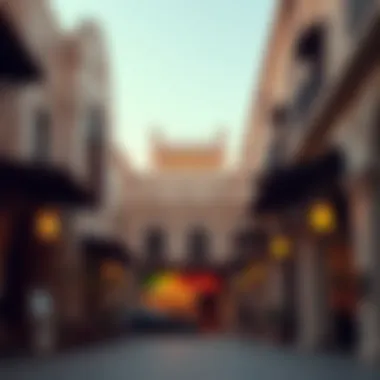
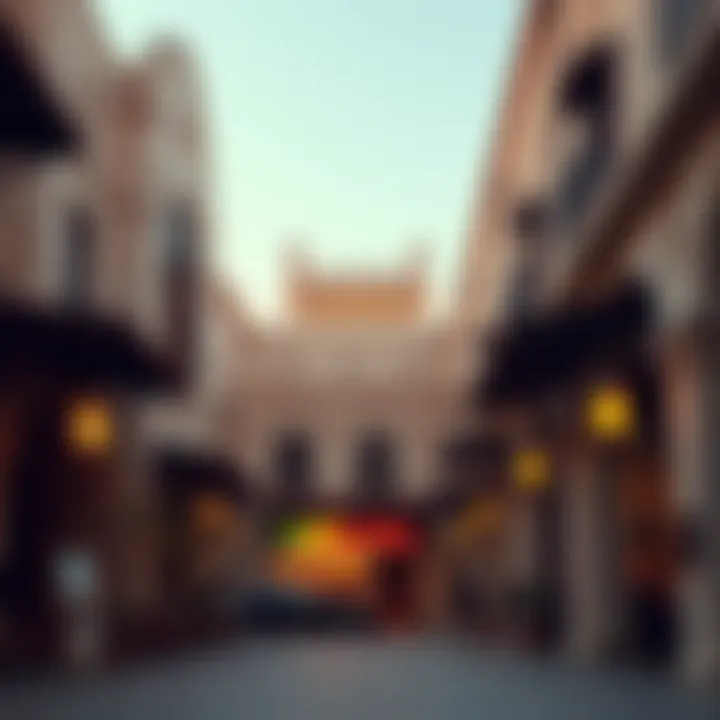
In many cases, local vendors are adapting their offerings. For instance, there are shops that now blend traditional crafts with contemporary designs, attempting to harness the best of both worlds. However, this shift often comes at the expense of authenticity. It's a tightrope walk that many local craftsmen are grappling with, trying to honor tradition while also appealing to modern tastes.
Competition from Malls
Another daunting challenge comes from the rise of shopping malls. These modern retail environments offer not just shopping, but also experiences – a stark contrast to the traditional souk. In essence, they create a “one-stop-shop” appeal, often with air conditioning and spacious layouts that make for a comfortable shopping experience.
- Shopping malls generally provide a wider range of products under one roof, making it easier for consumers who might be pressed for time.
- The convenience of parking and various dining options makes malls an attractive destination for families and tourists alike; something Naif Souk struggles to offer.
- Marketing strategies used by mall developers are far more sophisticated, leveraging social media and influencer partnerships to attract foot traffic.
As a result, many visitors may opt for the ease of malls over the authentic, albeit more chaotic, experience of Naif Souk. However, there’s an opportunity here: if Naif Souk can modernize elements without losing its essence, it may very well attract a new audience looking for authentic experiences amid bleak retail sameness.
Therefore, the very essence of Naif Souk’s survival lies in embracing change, fostering innovation in craftsmanship, and re-establishing its identity in a rapidly evolving marketplace.
In the face of these challenges, the souk’s resilience will depend not just on the adaptability of individual vendors but also on community support and strategic initiatives that elevate its status in the eyes of a global audience.
Future Outlook
The future of Naif Souk holds great promise as Dubai continues to evolve into a global metropolis. This market is not only a hub of culture and commerce but also a symbol of Dubai's ability to meld tradition with modern advancements. Assessing the future outlook for Naif Souk offers insights into how this storied marketplace can remain relevant amid changing consumer preferences and competition from newer commercial spaces.
Importance of Future Outlook: A clear vision for the development of Naif Souk impacts various stakeholders, including local artisans, entrepreneurs, and investors. Ensuring that its rich cultural fabric is preserved while embracing modernization is key to sustaining its unique identity in a rapidly changing environment.
Vision for Development
The vision for the development of Naif Souk encompasses a robust plan that prioritizes community involvement and revitalization efforts. In envisioning the souk's future, key elements include:
- Enhanced Infrastructure: Upgrading existing facilities while respecting traditional motifs can create a welcoming atmosphere for both locals and tourists.
- Diverse Offerings: Expanding the range of products available makes it essential to strike a balance between traditional crafts and contemporary goods.
- Tourism Integration: Collaboration with local tourism boards to attract visitors will enhance foot traffic, benefiting all vendors.
Additionally, attracting investment towards the development of quality spaces for local businesses will ensure that artisans have the resources needed to thrive. Revitalized public areas can also improve engagement, making Naif Souk a focal point for cultural events and festivals.
Sustainability Initiatives
As part of the evolving landscape, sustainability initiatives truly stand out. There is a growing recognition that preserving the environment and supporting local economies go hand-in-hand. Significant initiatives may include:
- Eco-friendly Practices: Encouraging vendors to adopt sustainable materials and practices, from packaging to product manufacturing.
- Waste Management: Implementing efficient waste reduction strategies to enhance cleanliness and appeal.
- Community Engagement: Involvement of local communities in green projects promotes stewardship and responsibility towards the environment, strengthening neighborhood bonds.
By striving for a sustainable future, Naif Souk can ensure longevity while continuing to charm generations of visitors and locals alike. The commitment to green initiatives will not only set a standard for other markets in Dubai but also enhance the overall visitor experience.
The End
The conclusion of this article underscores the multifaceted significance of Naif Souk in both cultural and commercial contexts. An exploration of this bustling market provides a window into Dubai’s rich historical tapestry while also reflecting its dynamic contemporary evolution. Understanding Naif Souk's role is beneficial for a variety of stakeholders, including tourists drawn to its vibrant atmosphere, local artisans hoping to showcase their crafts, and investors looking for promising opportunities in emerging areas.
Summary of Key Insights
Throughout our journey into Naif Souk, several key insights emerge that paint a comprehensive picture of its ongoing relevance:
- Historical Significance: The souk stands as a testament to Dubai’s heritage, serving as a bustling hub for trade and cultural exchange for decades.
- Variety of Goods: From traditional handicrafts to modern textiles and exquisite jewelry, the spectrum of products available at the souk caters to diverse consumer needs.
- Visitor Experience: The lively atmosphere and culinary delights—like street food and local specialties—add layers of engagement for visitors, making their experience rich and memorable.
- Impact of Modernization: Balancing heritage with modern needs has kept the souk not just relevant, but thriving, amidst the encroaching pressures of globalization and competition from more modern shopping centers.
- Future Outlook: Development visions and sustainability initiatives reveal how Naif Souk will continue becoming a beacon of cultural significance in an ever-evolving marketplace.
Final Thoughts on Naif Souk's Role
As we reflect on Naif Souk’s contributions, it becomes clear that it is more than just a market. It’s a community heartbeat—a place where the past and future intermingle in a unique dance. For investors and homebuyers, being attuned to such spaces can unveil opportunities that are as rich and colorful as the textiles sold within the souk. For expatriates, it offers a slice of culture that is refreshing and enlightening amid the rapid pace of urban Dubai.
In essence, Naif Souk not only preserves the traditions of yesteryear but embraces the modern era, carving out a niche that will undoubtedly resonate with future generations. Engaging with Naif Souk means participating in a cultural dialogue, one that is vital for maintaining the identity this vibrant city is known for.
"In the heart of every market lies a story of its people. Naif Souk is no exception; its narrative is rich with hope, resilience, and community spirit."
For anyone looking to invest in Dubai or simply soak in its cultural essence, making a stop at Naif Souk is an experience that should not be missed.
Relevant resources for more information include:


